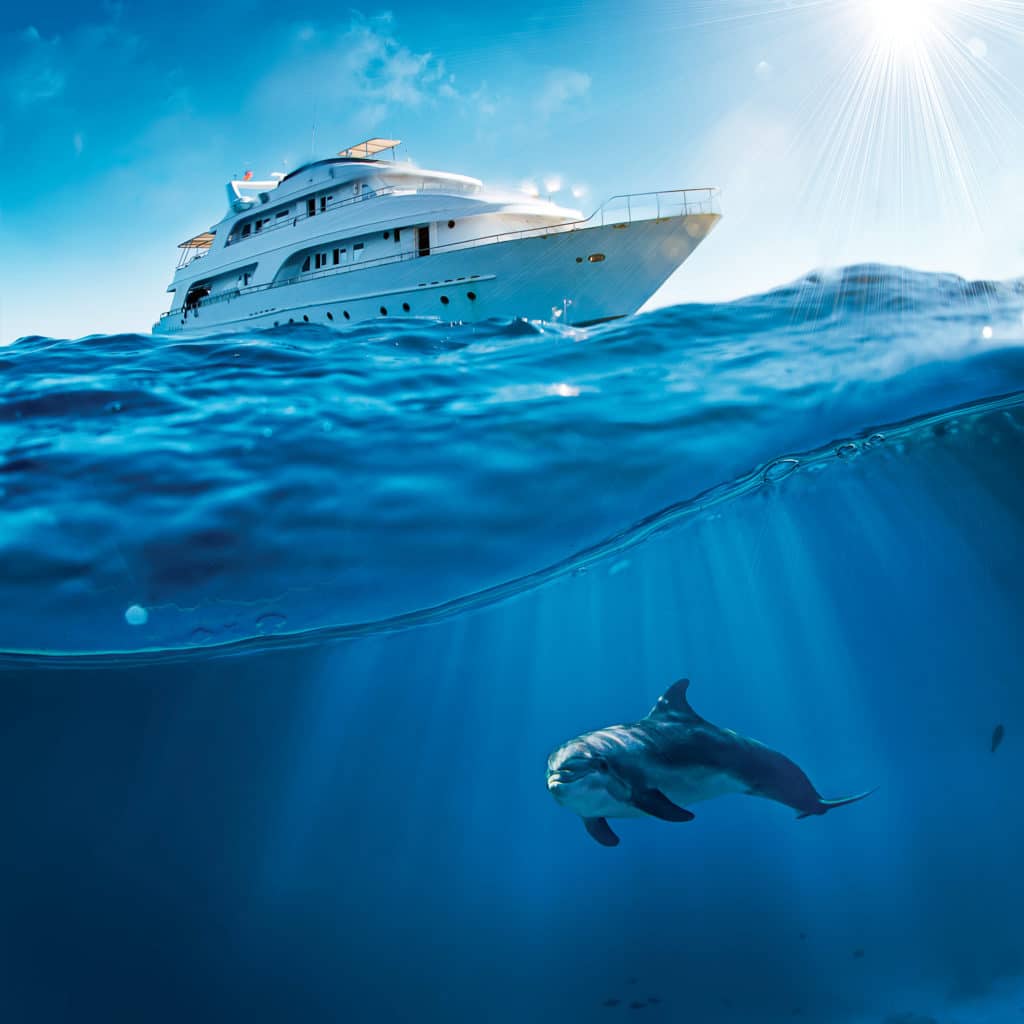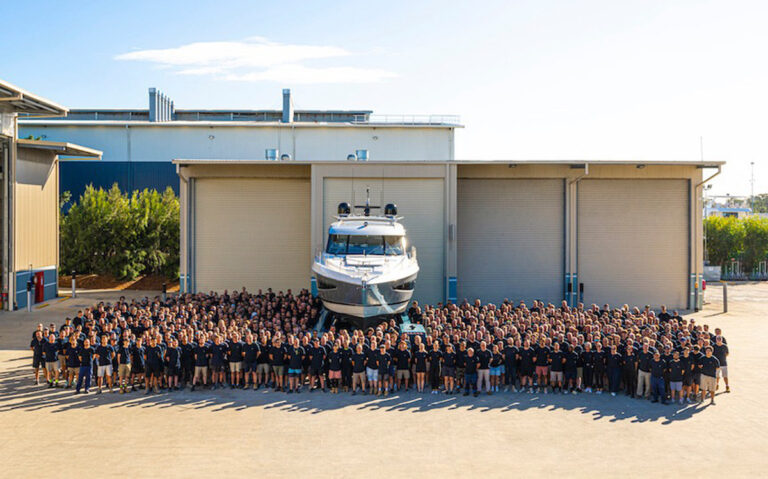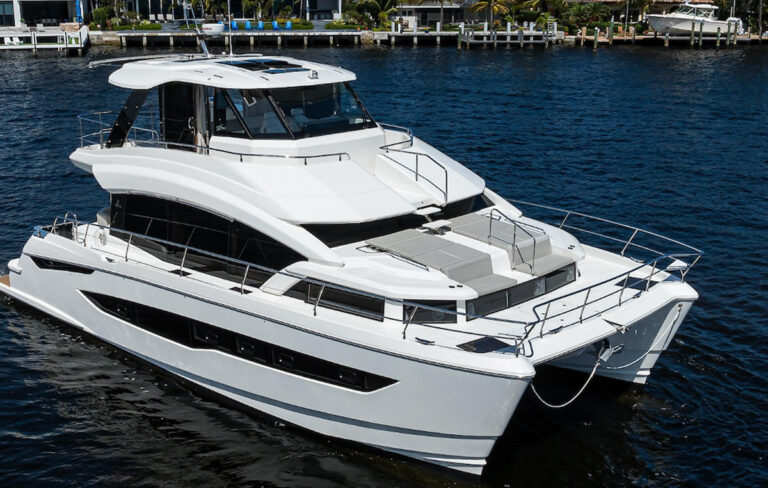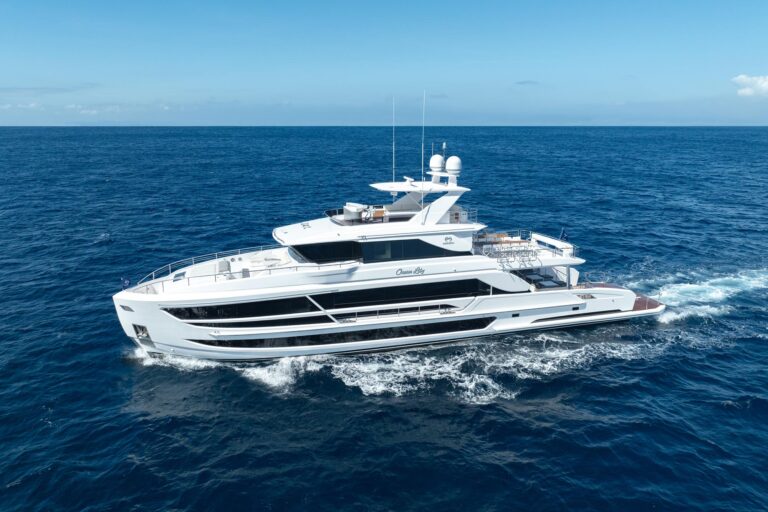
The year was 2015. I was with Dave Dunn, Garmin’s senior director of marine sales, aboard Capt. Mike Flowers’ SeaHunter 24 Ruff-n-Uff, slowly approaching Miami’s MacArthur Causeway. Flowers tapped his Garmin multifunction display, and it presented imagery from the Garmin Panoptix PS31 forward-looking sonar.
Dunn cast a lure and, moments later, a tarpon appeared. A dance unfurled, and the target wisely dodged a root canal.
Watching this episode on screen, I was gobsmacked by Panoptix’s LiveVu and RealVu perspectives, which combined information from the forward-looking transducer, multibeam sonar and phased-array technology to produce live, video-type imagery.
Mostly, I was amazed that ceramic bits could yield this kind of water-column awareness.
Darrell Lowrance helped introduce this technology to boaters in 1957 with his Fish-Lo-K-Tor, which provided depth information and detected objects in the water column. Products available today have far better capabilities and onscreen imagery than equipment from just a decade ago.
“Transducers are the key part of the fish finder’s performance: The frequency and power rating of the ceramic determines depth capabilities, coverage under the boat and the ability to see fish in the water column,” says Craig Cushman, Airmar Technology Corp.’s director of marketing. Transducers, he adds, rely on precision timing, much like radars. “The transducer sends acoustic energy throughout the water column and then listens for returning signals. The fish finder then interprets the echo to display what is below the boat.”
Like radars, transducers spend roughly 1 percent of their time transmitting and 99 percent listening for echoes. Transducers are seldom seen, but they take high-voltage electrical pulses (from their networked fish finder, multifunction display or sonar) and convert them to outgoing sound waves that propagate downward and outward in a cone-type shape. Today’s transducers are sensitive enough to discern echoes that are just a few hundredths of a single volt.
Transducers are built like nesting dolls but with piezoceramic elements at their cores. These ceramic elements are made from polarized barium titanate or lead zirconate titanate, look like metal, and can be fabricated into shapes of various complexity. A basic ceramic element might be shaped like a hockey puck, while a more sophisticated element might be formed into a bar, oval, ring or tube.
These ceramic elements are separated from the water on one side by an “acoustic window,” while the rest of the element is encased in a sound-absorbing material that helps direct the sound waves out of, and back through, the acoustically neutral window. The encapsulating material (typically urethane or epoxy) is then encased in the physical housing (usually bronze, molded plastic, stainless steel or urethane). Depending on the transducer, miniaturized printed circuit boards are sometimes embedded in the encapsulating layer that allows the fish finder to automatically adapt to the connected transducer. A pipestem houses electrically shielded cables that run from the yacht’s fish finder or multifunction display to the PCBs and elements.
“The ceramics inside can dramatically change the cost of a transducer,” says Jim McGowan, Raymarine’s Americas marketing manager.
Some entry-level transducers might employ a single piezoceramic element, while high-end transducers might involve 16 to 18 elements. Transducers can be manufactured to “resonate” at a specific frequency (say, 50 kHz), dual frequencies (50/200 kHz) or over a sweep of frequencies.
“You can only play so many songs with two keys on the piano,” Dunn says, adding that chirp transducers transmit over a sweep of frequencies, like having a music scale’s worth of notes, but in this case with better target separation and resolution as the result.
According to McGowan, a single-frequency transducer sounds like a ticking watch. “Chirp would sound like a police siren, increasing in pitch,” he says. “The first returns are the first transmissions, so the system has a reference, allowing it to overlap the original pulse with the echo, giving [onscreen] detail.”
Multibeam sonar systems typically employ an array of ceramic elements. These elements can be electronically steered by the transducer’s controlling microprocessors to ring at specific or sequenced times to scan the seafloor, or they can all ring simultaneously. Today’s multibeam and ultrawide-beam systems can also yield high-resolution information about what’s on each side of the keel (sometimes called side-scanning sonar) or, as Dunn and I saw in 2015, forward-looking imagery.
While McGowan says the sport-fishing crowd drives transducer development, the computer-electronics market enables innovation. “We have the advantage of components,” says Cushman, pointing to today’s dime-size PCBs. They’ve “become smaller and cheaper, which lets us put different things inside.”
As with all markets, there are high-end, mid-level and entry-level transducers. When it comes to the high end of the market, Airmar is the undisputed leader. While most of the bigger marine-electronics manufacturers make transducers in-house, they typically build less-complex, high-volume sounders—or, in some cases, highly specialized, high-end transducers (for example, Garmin builds its Panoptix transducers).
According to Cushman, Airmar manufactures roughly 80 to 90 percent of all transducers that operate on at least 600 watts of transmitting power. Airmar-built transducers are sometimes sold with an Airmar badge; other times, they carry third-party branding.
This relationship frees the Big Four (Furuno, Garmin, Navico and Raymarine) to innovate new fish-finding and sonar technologies and specifications, rather than developing transducers, and it allows Airmar to amass the capability and expertise to manufacture at scale and to high industrial standards.
Customers can order Airmar-built transducers that ship with plug-and-play cable connections, and owners can often use existing transducers with other third-party fish finders or multifunction displays. Airmar’s distribution company, Gemeco Marine Accessories, can help customers determine if an existing transducer will work with other equipment. If an existing transducer is compatible, Gemeco can provide the wiring diagram and splice kit to rewire it for use with a new fish finder. Changing out through-hull transducers, however, requires a haulout and a plan.
“Know what you want to do with the system,” McGowan says. “Transducers are fundamental to the performance of the system, and you get what you pay for.”
After all, without good acoustics, how else will you be able to spin a credible onscreen yarn about a big one that got away?
Fitting Considerations
Transducers can be hung from a transom-mounted bracket, or they can be in-hull or through-hull mounted. While each setup has its advantages, through-hulls are best for power cruising and sport fishing yachts. “Airmar has certified installers who have been trained on the best installation practices,” says Airmar’s Craig Cushman.









